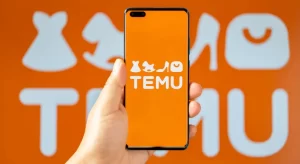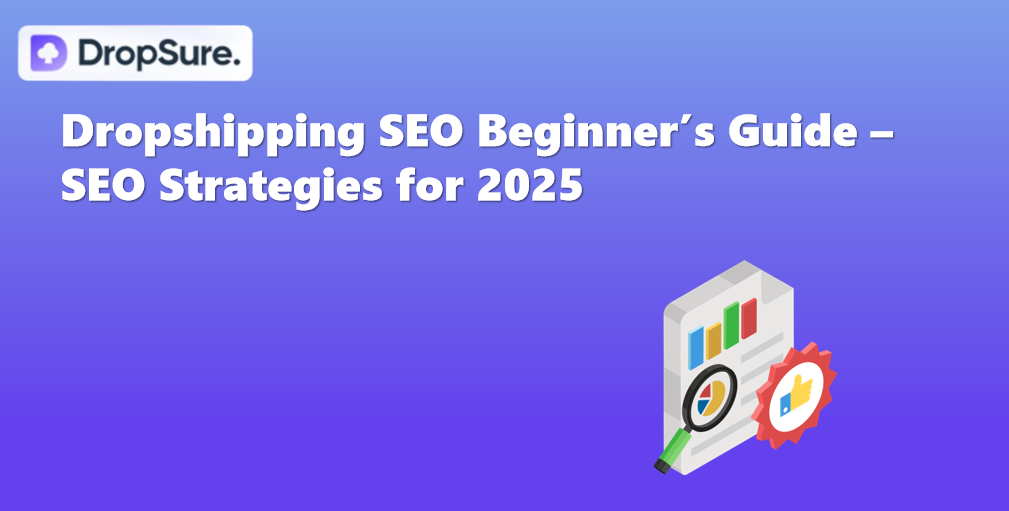
Dropshipping is a flexible e-commerce model that allows you to run a business without holding inventory. Compared to buying and stocking products yourself, it has a lower barrier to entry and a faster startup time, making it the first choice for many entrepreneurs. TEMU, as a rapidly rising new platform, also offers fresh opportunities for dropshipping sellers.
This article will guide you step-by-step on how to start dropshipping sales on TEMU, covering key practical points such as platform rules, product selection tips, pricing strategies, shipping coordination, and brand building.
Why Choose TEMU?
TEMU is the cross-border e-commerce platform under Pinduoduo. Since its launch in 2022, it has quickly gained popularity in the US and European markets by focusing on “extreme cost-performance” and a “fully managed operation” model. In a short time, it has attracted a large number of overseas users, becoming one of the fastest-growing platforms in the cross-border e-commerce space.
The core advantages of choosing TEMU include:
Powerful Traffic Distribution System
TEMU borrows the “interest-based e-commerce” model from Pinduoduo, focusing on algorithmic recommendations like “You May Like” instead of relying on keyword rankings or store seniority. This means even new sellers and new products can get platform recommendations and quickly gain traction as long as the price is competitive and the product fits the platform’s style.
Fully Managed Fulfillment
TEMU implements a “fully managed” model: sellers send their products to designated warehouses in China, and the platform takes care of everything else, including packaging, cross-border logistics, overseas delivery, and after-sales service. You don’t have to worry about complicated issues like international shipping, customer service, or returns, which greatly lowers the operational barrier. This is perfect for individual sellers, small teams, or anyone new to cross-border e-commerce.
Flexible No-Inventory Model
TEMU supports dropshipping. You can leverage existing domestic supply chain resources—such as 1688, Yiwu, or Guangzhou wholesale markets—to run an inventory-free operation. Just connect with suppliers and purchase on demand to ship one by one. This model not only drastically reduces startup costs and inventory risks but also allows you to quickly test different categories and find winning products.
How to Open a Store on TEMU?
The process is straightforward, but the review is relatively strict, so you need to prepare your qualifications in advance.
Step 1: Submit Your Application
How to proceed:
Go to TEMU’s official seller registration portal 👉 https://seller.temu.com/
Register an account
- Use a company email (it’s better not to use a personal email to appear more professional);
- Set a strong password and enable two-factor authentication (verification via WeChat Work or phone number is more reliable).
Step 2: Fill In Company Information
- Company name: must match exactly with your business license;
- Unified Social Credit Code: fill this if your company is registered in China;
- Legal representative’s name & ID: must be consistent with the business license;
- Registered address: it’s best to provide a specific and detailed address—the clearer, the better.
Step 3: Choose Your Main Product Category
- TEMU has many categories: apparel, home goods, 3C electronics, tools, beauty, pet supplies, outdoor, etc.;
- It’s recommended to focus on one category at first—for example, if you sell pet products, select only that category;
- Don’t pick too many categories at once, as this might be seen as “non-specialized” and slow down the review process.
Step 4: Upload Required Documents
- Scanned business license (with official stamp is more solid);
- Trademark certificate (if you have a brand);
- Category qualification certificates (like 3C, CE, etc.)—optional but a plus;
- Factory certification or supplier agreement.
Step 5: Qualification Review
This step is basically TEMU checking if you’re reliable, especially whether you have a stable supply chain and solid shipping capabilities. Although the whole process is done online, it’s a manual review—not just a machine scanning and approving you randomly. They care about every little detail you submit because they want to make sure you truly have the ability to “supply, ship, and guarantee” your products.
What the platform cares about most is your supply chain strength. Simply put, where do your products come from? Do you own a factory or work with one? Or are you just sourcing from somewhere else without control? If you can provide photos of your factory, cooperation agreements, or even stable communication and shipping records with a trusted seller on platforms like 1688, that will boost your credibility a lot. TEMU really prefers “source-based sellers” because their biggest fear is that you accept orders but can’t ship them, leaving the platform to take the blame. So even if you’re dropshipping, you should still show that you have stable inventory sources and can prepare stock in advance — for example, by having a small warehouse or someone helping you pack and ship. These details matter.
Fulfillment capability is another key focus. TEMU is very sensitive about timeliness and after-sales service, especially in fast-moving, high-SKU categories like apparel. You need to convince the platform that you’re not a newbie — for example, you can ship within 48 hours, have some after-sales handling process, and accept their timeliness management. If you have previous experience running stores on platforms like Taobao, Pinduoduo, AliExpress, or even a 1688 shop, definitely share screenshots of your performance data — shipping speed, positive feedback rate, monthly sales volume, everything. Show them you’re a serious player.
Store Onboarding
Once you pass the review, TEMU will assign a dedicated account manager to work with you. This isn’t some “here’s a link, figure it out yourself” kind of deal—they really do a one-on-one hand-holding, guiding you step-by-step. From listing products, pricing strategies, to using the backend system, they’ll teach you everything. Sometimes they’ll even straight-up tell you, “This category is running low on stock,” or “Your price is off, here’s the recommended range.” It’s clear they want you to succeed.
The onboarding usually covers two main parts: first, how to use the backend system, including how to upload new products, change prices, check traffic data, set up images, manage SKUs, and so on. Second, product optimization advice, which feels a bit like having a mentor. They’ll analyze your main category and give suggestions on pricing, whether your images are good enough to get on the homepage, if your descriptions are detailed enough, and warn you about common return risks (like size or color issues) so you can avoid pitfalls early
Friendly Reminder:
TEMU definitely prefers sellers with factory backgrounds or stable supply capabilities. If you’re pure dropshipping, it’s highly recommended to first connect with a reliable domestic dropshipping supplier.
TEMU Hot-Selling Categories Recommendation
When doing dropshipping on TEMU, product selection is absolutely the top priority. The platform moves fast, pushes new products constantly, and user preferences are clear. If you pick the wrong niche, you might get only a handful of orders a day—or none at all. But if you hit a hot category, even newly listed products can start selling quickly.
Women’s Apparel
Women’s apparel is arguably one of the fastest-moving categories on TEMU right now. Whether it’s search popularity, traffic support, or exposure in platform campaigns, everything is tilted toward this category. The main buyers are European and American women, especially in the US, who shop frequently and are less price-sensitive. Orders come fast and repurchase rates are high—classic “lightweight fast-exploding” category.
🔹 Hot Sellers
- All-season short-sleeve T-shirts (cotton basics are most stable, especially minimalist or holiday-themed prints)
- Casual loose hoodies (move fast in spring and autumn transitional seasons)
- Base layers/long sleeves/tank tops (great for combo sales)
Practical Tips
- Don’t keep your color/size SKU count too low—each product should have at least 6 combinations (e.g., 3 colors x 3 sizes) to enter the platform’s “multi-variant recommendation pool.”
- If you’re using AI-generated prints, add a line like “This design was inspired by…” to boost buyer goodwill (avoid saying it’s AI directly).
- Sets pairing tops and bottoms convert better than single T-shirts; even if it’s not a full set, you can guide buyers to mix & match through titles/images.
Home Goods
Hot Sellers List
- Kitchen tools: multifunction vegetable cutters, oil bottle brushes, dishwashing gadgets, kitchen storage trays
- Home storage: wall hooks, divided storage boxes, stackable shelves, drawer organizers
- Ambient lighting: LED string lights, motion sensor night lights, holiday mood lights
- Lazy helper items: waterproof strips for sinks, toilet seat cushions, under-bed rolling storage bins, etc.
Special Reminders
- TEMU highly encourages uploading videos or GIFs showing “real-life scenes,” like “Instant Kitchen Cleanup” or “Bedroom Turns Cozy Zone” — this greatly boosts exposure.
- For storage products, main images with “before vs after” comparison shots significantly improve conversion rates.
- If you can create basic distributor text/pictures or short videos, the platform will prioritize your exposure, especially for new products during cold start.
Which Dropshipping Suppliers Are Reliable?
CJ Dropshipping
https://cjdropshipping.com
CJ is currently the closest alternative to Zendrop—and in many ways, even stronger. It’s a China-based dropshipping platform with a highly mature service system. The backend is English-friendly, supports one-click product sourcing, bulk listing, auto order processing, and even custom logos and branded packaging. Everything Zendrop offers, CJ does too—often at a lower cost. CJ has warehouses in China, the US, and Europe. For example, if you ship from the US warehouse, customers can receive their orders in 3–5 days—Amazon-level delivery speed. It integrates with Shopify, TikTok, Etsy, and other platforms, and even supports custom product development. If you’re looking to scale while keeping profit margins high, CJ is the top pick.
- Zendrop’s biggest competitor, based in China with warehouses in China, the US, and Europe
- One-click product import, auto order processing, and private/custom services (packaging & logo)
- Fully integrated with Shopify, WooCommerce, Etsy, TikTok Shop, etc.
- White-label packaging available & fast shipping (3–5 days from US warehouse)
💡 Best for: Sellers on TikTok or standalone stores looking to scale while maximizing margins. CJ covers nearly everything Zendrop offers, often at a better price.
Spocket
https://spocket.co
Spocket is a dropshipping platform that focuses on local suppliers from the US and Europe. Most of the products come from the US and Europe, so the delivery speed is fast, making it ideal for mid-to-high-end independent stores. The overall product quality on the platform is relatively high, making it suitable for building a branded business. It integrates seamlessly with Shopify and is very easy to get started with. However, since it’s based on local sourcing, the prices are much higher, and the profit margins are not as good as Chinese products. If you prefer to avoid the China supply chain and want to go with a premium, locally sourced model in the US/European market, Spocket is a solid choice.
- Focuses on US/EU local suppliers, 70%+ products sourced from the US/Europe
- Seamless integration with Shopify; relatively high product quality
- Some products support private labeling
- Downside: Higher unit costs, lower profit margins (better for mid-to-high-end positioning)
💡 Ideal for sellers looking for local US/EU shipping and avoiding Chinese supply chains — offers an experience close to Amazon FBA.
AutoDS
AutoDS is a more systematized and automated tool platform that supports multiple sales channels such as Shopify, eBay, WooCommerce, and even Facebook Marketplace. It integrates various supplier sources including AliExpress, CJ, and some local US/EU warehouses. The platform offers a comprehensive set of features like product importing, pricing automation, order processing, inventory syncing, and auto-tracking number uploads—perfect for sellers running operations across multiple platforms with large SKU volumes. However, its interface can be a bit complex, so beginners might need time to get used to it. It’s best suited for users with some experience.
- Access to 500K+ products, auto product importing, order processing, and tracking sync
- Fully integrates with Shopify, Wix, WooCommerce, etc.
- Supports eBay and Facebook Marketplace
- UI is a bit complex; takes time for beginners to adapt
💡 Best for: Experienced sellers managing multiple platforms. It’s more like a powerful system + supplier platform combo.
DSers
DSers was originally the official dropshipping tool partnered with AliExpress, and many people use it when starting with AliExpress sourcing + Shopify. It connects directly with AliExpress data, making product importing and order processing highly efficient. You can also bulk process multiple orders with one click—very convenient. It supports managing multiple Shopify stores and allows for multi-supplier strategies. However, the shipping speed depends on the individual AliExpress sellers, which makes the customer experience harder to control. It’s suitable for product testing or as a lightweight tool for managing AliExpress operations.
- Originally an official AliExpress partner tool with complete data and full API access
- Supports AliExpress + custom suppliers + multi-account management
- AliExpress shipping is generally slow—try to work with sellers who have overseas warehouses
EPROLO
https://www.eprolo.com
EPROLO is also a well-established dropshipping platform, focusing on being free, customizable, and fast-shipping. It offers US-based warehouses, and many of its products ship faster than those from AliExpress. Some products also support logo printing and custom-branded packaging—very friendly for sellers building DTC brands. Although the platform interface is a bit outdated and the product variety isn’t as broad as CJdropshipping, it stands out for its stable service and reasonable pricing. It’s a cost-effective alternative to Zendrop. If you’re looking for a branded feel while controlling costs, this is a solid tool.
- Shopify-friendly, free to use, supports brand customization
- US/UK local warehouses, faster shipping than AliExpress
- Supports Print-on-Demand (like Printful)
- UI is a bit outdated; product selection not as rich as CJ
How to Optimize Product Listing and Pricing?
To succeed in listing products on TEMU, start with precise titles under 200 characters using keywords your target customers search for. Highlight key selling points and popular search terms but avoid keyword stuffing to maintain good exposure. Use clean, impactful main images with white or soft backgrounds and a consistent style to keep your store professional. In descriptions, focus on solving customer pain points and real-life usage scenarios to boost purchase desire.
For pricing, prioritize volume by calculating platform fees and shipping costs first, then add a reasonable profit margin. Avoid pricing too high outside your category’s typical range — for example, phone accessories usually sell between $10-$20, home goods $15-$30. Pricing in the lower to mid-range makes you more competitive. Regularly monitor keyword trends and competitor prices, and use discounts or promotions flexibly. Don’t wait for sales to drop before adjusting prices.
The key: precise keywords + clean, strong images + reasonable pricing + ongoing optimization = steady growth on TEMU.

 15 min read
15 min read







